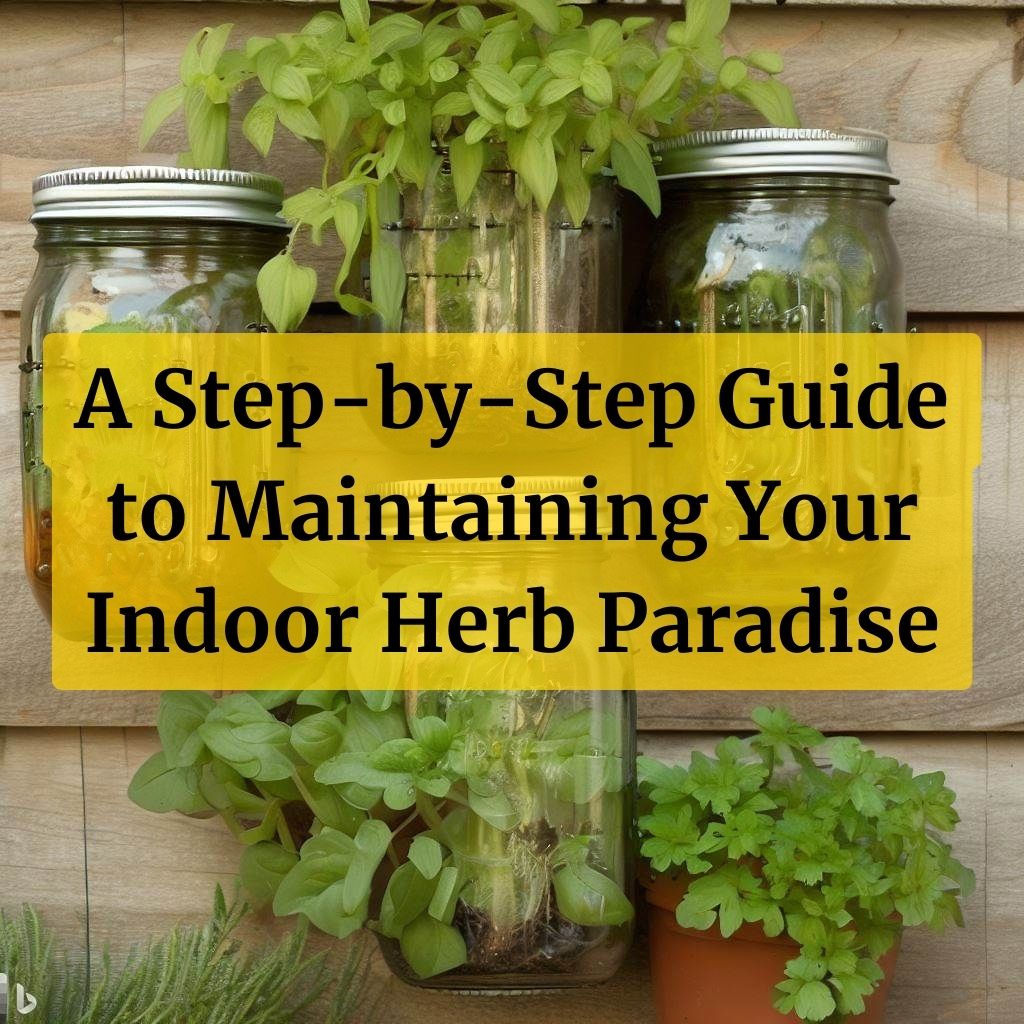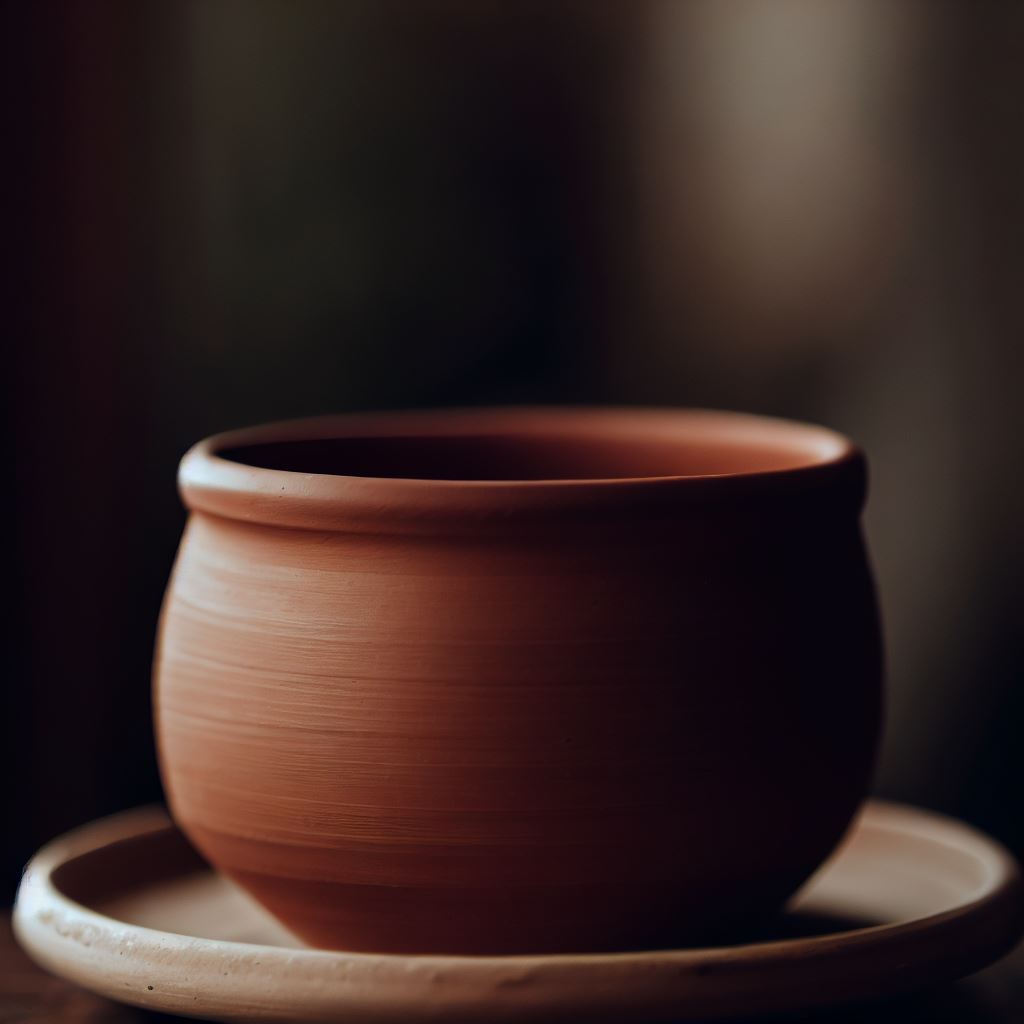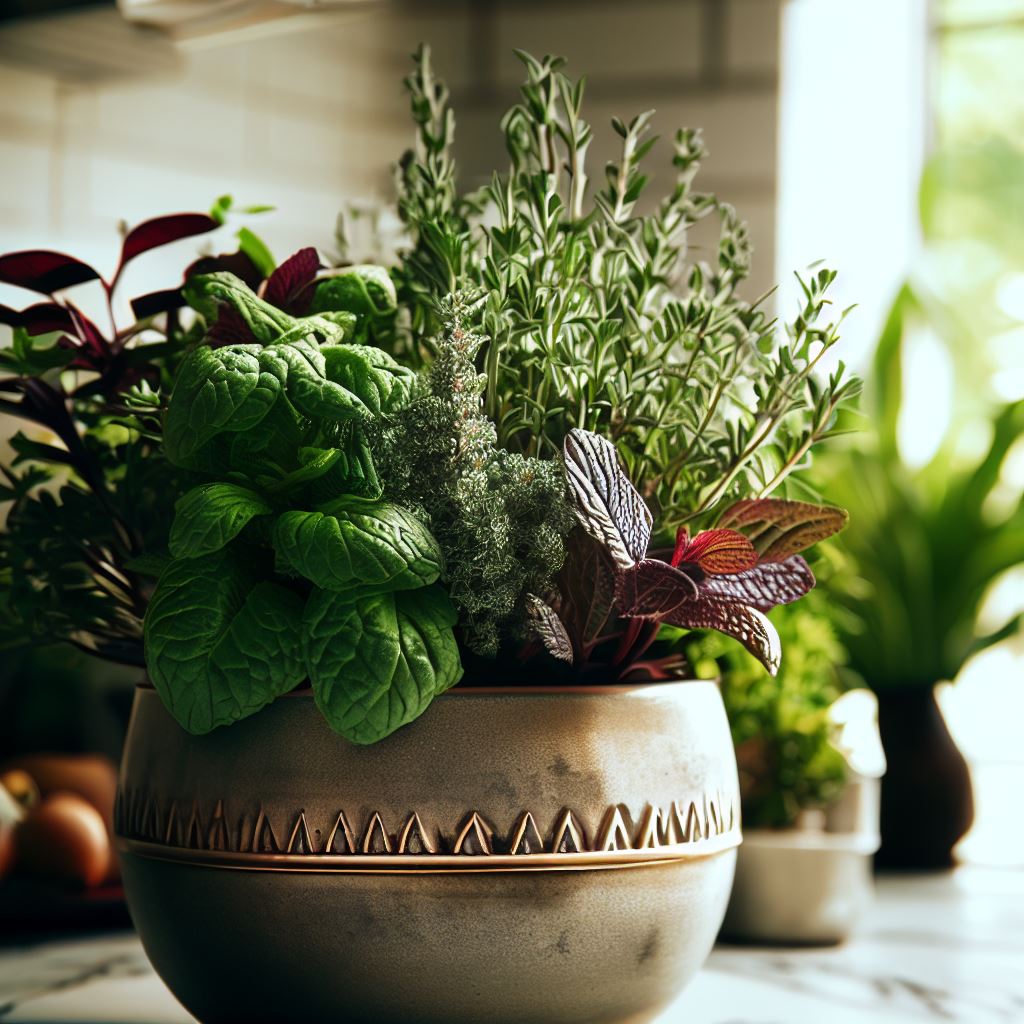
Indoor herb gardens can be a delightful addition to your home, providing fresh flavors and a touch of greenery. In this article, we’ll explore the key steps to maintaining an indoor herb garden, ensuring your herbs thrive and remain healthy
In this article
- 1 Choosing the Best Spot for Your Indoor Herb Garden
- 2 Select the Best Herb Pots for Your Indoor Herbs
- 3 Choosing the Right Plants for Your Indoor Herb Garden
- 4 Flush Indoor Herb Pots with Water To Remove Fertilizer Salt Buildup
- 5 Select the Best Indoor Potting Mix or Soil for Your Herbs
- 6 Feed Your Herbs with a Seaweed or Fish-Based Fertilizer
- 7 Provide Good Air Circulation
- 8 Show Your Indoor Herbs Some Love
- 9 Harvesting Your Herbs for Cooking
- 10 The Best Way to Store Your Herbs
- 11 More Tips for Success
Choosing the Best Spot for Your Indoor Herb Garden
The journey to a flourishing indoor herb garden begins with choosing the perfect spot. Herbs are sun lovers, so look for a sunny windowsill where they can bask in the glory of natural light. South or southwest-facing windows are ideal, but east or west-facing windows can also work with proper care.
Provide Strong Light for Your Indoor Herb Garden
Herbs crave light, and they need at least 6 hours of direct sunlight daily. If natural light is insufficient, consider using supplemental grow lights to ensure your herbs receive the light they need.
The Temperature Should Be Between 60-70 Degrees
Maintaining the right temperature is crucial for herb health. Keep your indoor garden in a room with a temperature range of 60-70 degrees Fahrenheit (15-24 degrees Celsius) for optimal growth.
An Infrequent, Slow, Thorough Watering Is Best
Overwatering is a common mistake when it comes to indoor herbs. Let the top inch of the soil dry out before watering, and always water thoroughly. Herbs prefer to dry out a bit between waterings.
Select the Best Herb Pots for Your Indoor Herbs
Choosing the right pots for your indoor herbs can make a significant difference in their growth. Let’s explore what makes a herb pot suitable for your green companions.
Drainage
Proper drainage is vital to prevent waterlogged soil. Opt for pots with drainage holes to ensure excess water can escape.

Saucers
Use saucers or trays under your pots to catch excess water, preventing it from damaging your windowsill or furniture.
Size
Select appropriately sized pots based on the growth potential of the herb. Smaller herbs like basil thrive in smaller containers, while larger herbs like rosemary require room to spread their roots.
Materials
Choose pots made of materials that retain moisture but don’t deprive the soil of oxygen. Terra cotta and ceramic pots are excellent choices.

Design
Get creative with pot design to enhance the aesthetic appeal of your indoor herb garden. Your herbs can be both flavorful and visually appealing.
Choosing the Right Plants for Your Indoor Herb Garden
Now that you’ve prepared the perfect environment, it’s time to choose the herbs that will grace your indoor garden. Let’s explore the best options and the ideal time to plant them.
What Are the Most Popular Herb Choices for Indoor Herb Gardening?
Basil, parsley, mint, chives, and thyme are among the most popular choices for indoor herb gardening due to their adaptability and culinary versatility.
When Is the Best Planting Time for an Indoor Herb Garden?
You can start your indoor herb garden at any time of the year. However, late winter or early spring is ideal for planting, as it aligns with the natural growth cycle of most herbs.
Seeds, Seedlings, or Cuttings?
Choose the propagation method that suits you best: seeds for the adventurous, seedlings for a head start, or cuttings for a shortcut to mature plants.
Grow Each Herb in a Separate Pot
Herbs have different growth rates and preferences, so it’s best to give each herb its own pot to cater to its unique needs.
Flush Indoor Herb Pots with Water To Remove Fertilizer Salt Buildup
Over time, fertilizer salts can accumulate in the soil, potentially harming your herbs. Flush the pots with water every few months to remove excess salts and keep your herbs healthy.
Select the Best Indoor Potting Mix or Soil for Your Herbs
The right soil mix is essential for herb growth. Use a well-draining potting mix with added organic matter to provide the nutrients your herbs need.
Feed Your Herbs with a Seaweed or Fish-Based Fertilizer
Herbs thrive on organic nutrients. Feed them with a balanced seaweed or fish-based fertilizer to keep them robust and flavorful.
Provide Good Air Circulation
Prevent fungal diseases by ensuring proper air circulation around your herbs. Use a fan or open windows occasionally to keep the air fresh.
Show Your Indoor Herbs Some Love
Give your herbs the attention they deserve. Regularly check for pests, prune them when necessary, and remove dead leaves to keep your garden vibrant.
Harvesting Your Herbs for Cooking
The joy of having an indoor herb garden culminates when you harvest fresh herbs for your culinary creations. Harvest in the morning when the flavors are most intense, and remember to snip from the top to encourage bushier growth.
The Best Way to Store Your Herbs
Storing herbs correctly can extend their shelf life and flavor. Let’s explore two excellent methods: storing fresh herbs and freezing herbs.
Storing Fresh Herbs
Place fresh herbs in a glass of water, similar to a bouquet of flowers, and cover them loosely with a plastic bag. Keep them in the refrigerator for longer freshness.
Freezing Herbs
Freezing herbs in oil or as ice cubes is a fantastic way to preserve their flavor. Simply chop the herbs, mix them with oil or water, and freeze them in an ice cube tray.
More Tips for Success
As you embark on your indoor herb gardening journey, here are some additional tips to ensure your garden thrives:
- Prune regularly to encourage bushier growth.
- Keep an eye out for pests and treat them promptly with natural remedies.
- Rotate your pots occasionally to ensure even growth.
- Experiment with companion planting to deter pests naturally.
- Don’t forget to label your pots to avoid confusion among your herbs.
Now that you’re armed with knowledge on how to maintain an indoor herb garden, it’s time to get your hands dirty and watch your herb paradise flourish.
Frequently Asked Questions
Can I grow herbs indoors year-round?
Yes, you can maintain an indoor herb garden throughout the year, provided you meet their specific needs for light, temperature, and care.
How often should I water my indoor herbs?
Herbs prefer infrequent but thorough watering. Let the top inch of soil dry out before watering, and make sure the pots have good drainage.
Do I need a green thumb to succeed with indoor herb gardening?
No, anyone can enjoy success with indoor herb gardening by following the right guidelines and paying attention to their herbs’ needs.
Can I use regular garden soil for my indoor herb garden?
It’s best to use a well-draining potting mix specifically designed for indoor herbs. Regular garden soil may compact and hinder root growth.
What are some common pests that affect indoor herbs?
Common indoor herb pests include aphids, whiteflies, and spider mites. Keep an eye out for signs of infestation and take prompt action to address them naturally.
In conclusion, nurturing an indoor herb garden is a rewarding and fulfilling endeavor. It not only provides fresh, flavorful herbs for your cooking but also adds a touch of greenery and fragrance to your home.
Happy gardening!







